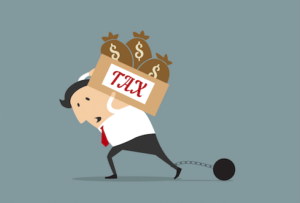25 Feb 2015 ObamaCare Taxes the Poor
This, apparently, is the new ObamaCare theme song:
From the press release for an H&R Block report:
So far in the 2015 tax season, H&R Block, the world’s largest consumer tax services provider, is seeing a majority (52 percent) who enrolled in insurance via the state or federal Marketplaces paying back a portion of the Advance Premium Tax Credit (APTC). The average amount paid back is $530, decreasing the tax refund on average by 17 percent, according to analysis almost six weeks into the 2015 tax season.
When people applied for insurance on the ObamaCare exchange in 2013, they had to give Healthcare.gov or the website of their state exchange their 2013 income to calculate their premium subsidy for 2014. However, if their income increased at all in 2014, then they would be receiving a subsidy that was too high. Come 2015, they would have to pay part of that subsidy back on their taxes.
The actual report doesn’t give a breakdown of what people owe by income, but it’s easy to take a rough guess at what income range this tax increase falls. Subsidies begin at 133 pecent of the federal poverty level (FPL) for a person in a state that has expanded Medicaid under ObamaCare, and 100 pecent FPL for those in states that have not. The subsidies stop at 400 percent of the federal poverty level (FPL), which in 2014 was about $46,700 for a single person and $95,400 for a family of four.
However, just because an individual has an income at or below 400 percent FPL doesn’t mean that he or she will receive a subsidy. Indeed, the closer one gets to 400 percent FPL, the less likely that he or she will receive a subsidy. The reason why is a bit complicated, and I won’t go into it here. For those interested, see this policy analysis by Sean Parnell and myself. In short, it’s probably not many people near the top of the range who are paying this tax, since they probably didn’t qualify for subsidies in the first place.
The taxes are probably not falling on many people in the upper middle (250-350 percent FPL) of the range, since many of them don’t qualify for subsidies either. As this PDF file that I created back in 2013 shows, in most states subsidies stop for 30-and-40-year-olds at someplace in the $30,000 range, usually well before 350 percent of FPL is reached. For 20-year-olds, the subsidies generally stop in the $20,000 range, almost always before 300 percent FPL is reached and often before 250 percent FPL is reached.
 A scan of the PDF file suggests that the many people who will to have to pay more taxes due to ObamaCare are probably near the 200 percent FPL range ($23,340 for a single person). That’s not wealthy, and not too much below that could be considered “poor.” And, undoubtedly, some of those people who are poor are owing taxes on their ObamaCare subsidies.
A scan of the PDF file suggests that the many people who will to have to pay more taxes due to ObamaCare are probably near the 200 percent FPL range ($23,340 for a single person). That’s not wealthy, and not too much below that could be considered “poor.” And, undoubtedly, some of those people who are poor are owing taxes on their ObamaCare subsidies.
In the liberal world, such taxation is panned as “regressive.” Yet, so far, I can’t find a single liberal publication that has picked up on this and criticized it. Can’t imagine why.



